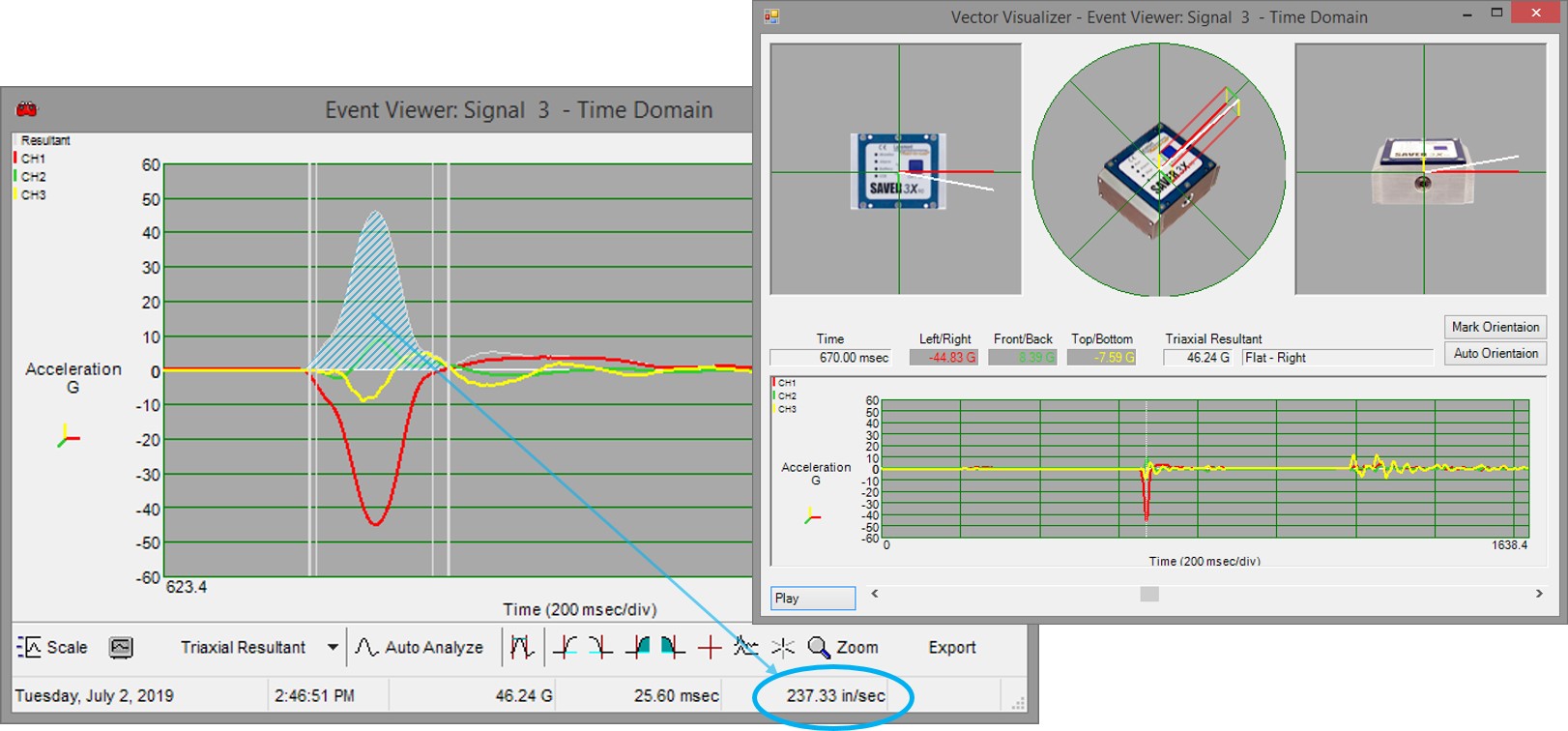Drop Tester – Impact not a Drop The likelihood of free fall drops within the supply chain has decreased over time due to the growth of automation.
Yet with automation comes speed & velocity. Expedited delivery literally means packages are moving faster. With higher velocity comes higher risk associated with shock/impact hazards. In the parcel and ecommerce supply chains, there are conveyors, chutes, and sorting operations which present opportunities for impacts - in any number of different directions/orientations.
With the considerable variability associated these impacts, ideally, we need a metric to gauge relative energy/severity – and velocity change is that metric. Velocity change is something we can use to represent the impact event by performing a drop test.
Over the past four decades, distribution studies with instrumented decoys were used to measure the severity of the hazards present in the supply chain. As part of those studies, shock and vibration field data recorders & loggers, like the Lansmont SAVER, were placed in a variety (size, weight) of laboratory-validated decoy packages and sent through several different global supply chain channels. The measured impacts are used to characterize the shock hazard within that environment.

The acceleration time history associated with an impact can be integrated to calculate the velocity change (delta V) around the impact. The delta V can be used with a formula to calculate what is called the EFFDH (Equivalent Free Fall Drop Height) – and this is the key to representing an impact with a drop test. Knowing the event velocity change, and knowing g is a constant (acceleration due to gravity), you can solve for h (drop height).
In the example below, triaxial resultant velocity change is shown (shaded area) from a dynamic event that was captured from a SAVER within a decoy package.

If we determine the total velocity change of an impact event, we can use a version of the formula to describe measured events in terms of their EFFDH. The total velocity change of the above impact event has the equivalent energy of that if you were to drop that package from a height equivalent to around 36". Knowing that, you could simulate that kind of impact in the laboratory using a Drop Tester - dropping that package from around 36" - on that same, right-hand side - as indicated by the SaverXware event analysis.
Once again, that EFFDH calculation doesn’t necessarily mean the instrumented package was dropped – instead it means that the package experienced the total energy input equivalent to that you would experience if you dropped the same package from XX inches/centimeters.
Drop Testers provide a low-cost, reliable, repeatable, and efficient method for simulating all those different types of impacts and severities. Raising and lowering the drop platen and changing the orientation of the test item are simple activities with quick cycle times.
The video below helps to demonstrate the controlled, repeatability of Lansmont Drop Testers.
Lansmont Drop Tester Repeatability from Lansmont Corporation on Vimeo.
Click below to download individual Lansmont Drop Tester Product Specification Sheets:
PDT-80M - PDT-80 - PDT-300 - PDT-700 - QR-3000
Contact Us for More Information